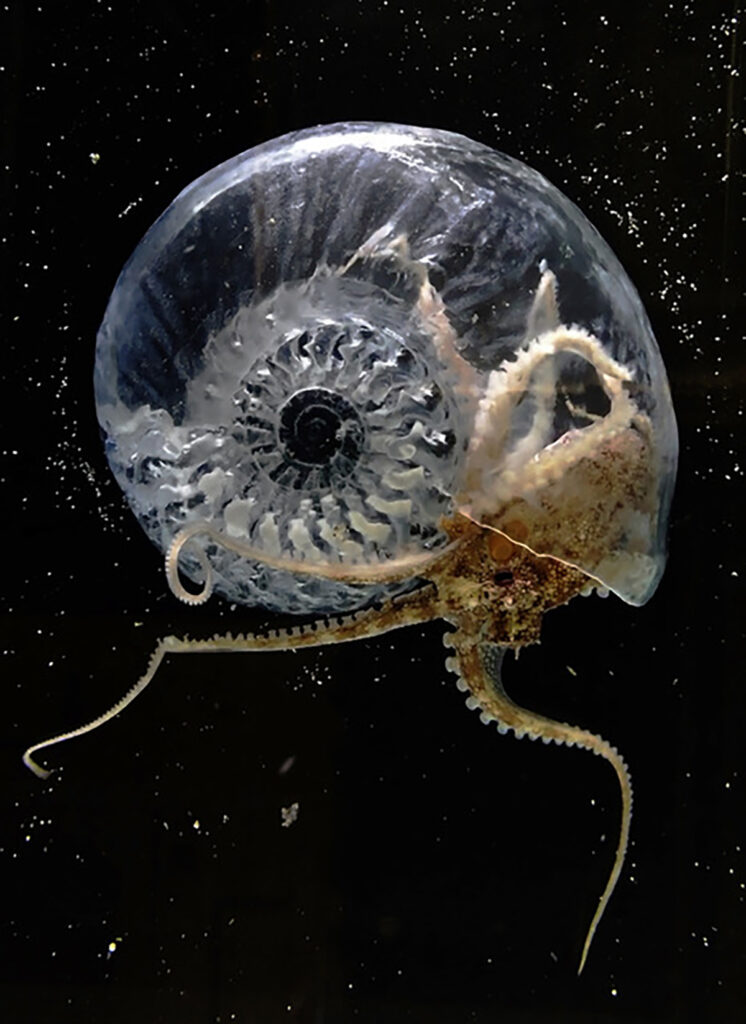I am excited to do some research and follow up based on some topics and discussions I heard on Dezeen Day. This particular discussion is based on an artist who has done some interesting and fascinating work within 3D Printing that I would like to talk about. I find it interesting a current movement within the art world of exploring scientific concepts within work. Art and design are starting to fuse a bit more with scientific thinking, and it is an interesting development we should be watching for the future. This particular artist will be showcasing a little of this type of thinking.
Aki Inomota is a Tokyo-based artist. She was born in Tokyo in 1983. She also completed an MFA at the Tokyo University of the Arts. Her degree was in Inter Media Art. Her work was mentioned within the Dezeen Talk from Paola Antonelli. Paola has curated Aki Inomota’s work in one of her recent projects at MOMA. The piece, in particular, is named Think Evolution #1. This particular piece is a resin casted ammonite fossil.
Ammonites are an extinct species. They are usually one of the most well known and distinguishable fossils to the normal human. They are excellent index fossils. One can link the rock layer they were found to specific geological time periods. These fossils usually have great preservation as well.
This particular ammonite fossil was cast with resin. I think that art is interesting in that it can be the simplest things and ideas that make remarkable pieces. Many of us could do this simply and effectively through 3D Printing, but this particular artist had the creativity to do it. The value of creativity is something to harp on continuously.
In terms of the piece itself, the message is interesting. When this piece is placed near an octopus in water, an octopus will form itself within the shell. Octopus and ammonites are related in terms of species, so it is interesting to see how an octopus feels comfortable within this foreign shell. Octopus have grown out of the need for their shells through evolution, but this shows that they are comfortable using them still.
Aki Inomata’s “Think Evolution #1 : Kiku-ishi(Ammonite)” an octopus exploring its ancestral biological habitat. pic.twitter.com/wi8DvWH1NG
— matthew blunderfield (@_blndrfld) August 15, 2019
This piece was curated by Paola because of her thoughts on extinction and how it relates to humanity. We all are going to die at some point. This is our impending reality, but how do people act upon this? How do people change things for the better? If we know we shall die, what do we do to make our lives and the lives of others better?
I think that with this piece, my opinions come from a different perspective. I am intrigued by how the octopus is playing naturally with this resin cast piece. The octopus recognizes as something of familiarity. When one has an intuitive feel for something, what can explain that? I find it fascinating that something that is instinct still has a familiarity to a descendant or relative species way down the line.
There are a large number of octopus species that devise shelters out of coconut and mollusk shells. The goal of this piece was to explore the effect of transmitted evolutionary knowledge. Inomata recreated an ammonite shell by leveraging 3D scanning to recreate a digital model of the shell.
Using 3D printing to do this artistic piece is very fascinating. I would love to know people’s opinions on this in particular. What should we be doing to prepare for extinction? What does this piece do in terms of shifting your perspective in the way you live?
Discuss this and other 3D printing topics at 3DPrintBoard.com or share your thoughts below.
Subscribe to Our Email Newsletter
Stay up-to-date on all the latest news from the 3D printing industry and receive information and offers from third party vendors.
You May Also Like
3D Printing Financials: Protolabs’ Q1 3D Printing Revenue is Flat, Company Advances in Technology Push
Protolabs (NYSE: PRLB) has kicked off 2024 with a mild boost in revenue, revealing how the Minnesota-based company manages to adapt and thrive even in uncertain market conditions. While the...
NASA Backs Project for 3D Printing Space Sensors
NASA granted $300,000 to Florida State University (FSU) and Florida Agricultural and Mechanical University (FAMU) to pioneer a project using 3D printing to develop cutting-edge sensors capable of withstanding the...
Further Understanding of 3D Printing Design at ADDITIV Design World
ADDITIV is back once again! This time, the virtual platform for additive manufacturing will be holding the first-ever edition of ADDITIV Design World on May 23rd from 9:00 AM –...
Daring AM: Rocket Lab Shoots for the Stars, Astrobotic Wants to 3D Print on the Moon
Once again, space exploration teams up with the 3D printing industry, launching projects that could change how we explore space. Pioneering space manufacturer Rocket Lab (Nasdaq: RKLB) secured a $14.49...




































